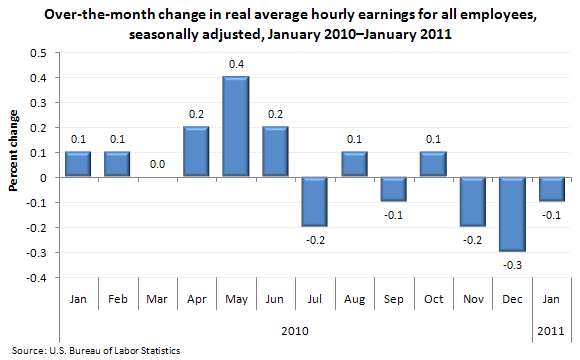What’s in a Paycheck?
Maybe you began recruiting ten years ago. When you first began and told a job candidate that they were offered a salary of $4o,000, the salary meant something different than the same one does today. As a recruiter, it’s important to understand what salaries can actually buy in today’s market.
The government analyzes this reality for the average worker under the term “real” to determine how much buying power workers have. Over the past year, workers’ salaries represented more purchasing power than salaries of the previous year. However, the most recent statistics show that, although workers earned more this December, their earnings did not carry as much weight because the prices to buy goods rose as well.
Real average hourly earnings for all employees fell 0.1 percent from December 2010 to January 2011, seasonally adjusted. This decrease stemmed from a 0.4-percent increase in average hourly earnings, which was more than offset by a 0.4-percent increase in the Consumer Price Index for All Urban Consumers (CPI-U).
Real average weekly earnings fell 0.3 percent over the month, as a result of the average workweek falling by 0.3 percent combined with the decline in real average hourly earnings.
Real average hourly earnings rose by 0.2 percent, seasonally adjusted, from January 2010 to January 2011. A 0.6-percent increase in average weekly hours combined with the increase in real average hourly earnings resulted in a 0.8-percent increase in real average weekly earnings during this period.
It is easy to see why slight salary increases are no longer enough to justify switching jobs. When you are coaching (or “closing”) a candidate on a new position, it might be smart to play up all of the different factors going into their decision. In an unstable environment and with prices going up, an increase in pay means less than it did a year ago. Unless the pay increase is a real jump (perhaps >10% of their current salary, representing more than most regular pay increases), anticipate your candidate questioning why they should make the transition to an unknown environment. When dealing with candidates, be sure to understand their deep underlying motivations.


